-
Product Name
GPR50 antibody
- Documents
-
Description
GPR50 Rabbit Polyclonal antibody. Positive FC detected in K-562 cells. Positive IHC detected in mouse brain tissue. Positive IF detected in mouse brain tissue, SH-SY5Y cells. Positive WB detected in HEK-293 cells. Observed molecular weight by Western-blot: 67 kDa
-
Tested applications
ELISA, IF, WB, IHC, FC
-
Species reactivity
Human, Mouse; other species not tested.
-
Alternative names
G protein coupled receptor 50 antibody; GPR50 antibody; Mel1c antibody; Melatonin related receptor antibody
-
Isotype
Rabbit IgG
-
Preparation
This antibody was obtained by immunization of Peptide (Accession Number: NM_004224). Purification method: Antigen affinity purified.
-
Clonality
Polyclonal
-
Formulation
PBS with 0.1% sodium azide and 50% glycerol pH 7.3.
-
Storage instructions
Store at -20℃. DO NOT ALIQUOT
-
Applications
Recommended Dilution:
WB: N/AIHC: 1:20-1:200
IF: 1:10-1:100
-
Validations
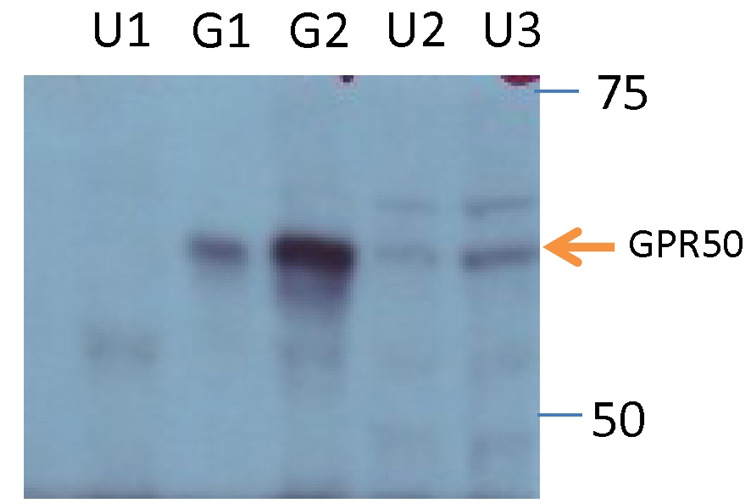
WB result of anti-GPR50 (Catalog No:111130, 1:2000) by Dr. Qian Li, University of Edinburgh. U1: SH-SY5Y cells, untransfected, 10ug; G1: HEK293 cells, with transfected GPR50, 1ug; G2: HEK293 cells, with transfected GPR50, 10ug; U2: HEK293 cells, untransfected, with endogenous GPR50, 10ug; U3: HEK293 cells, untransfected, with endogenous GPR50, 20ug.
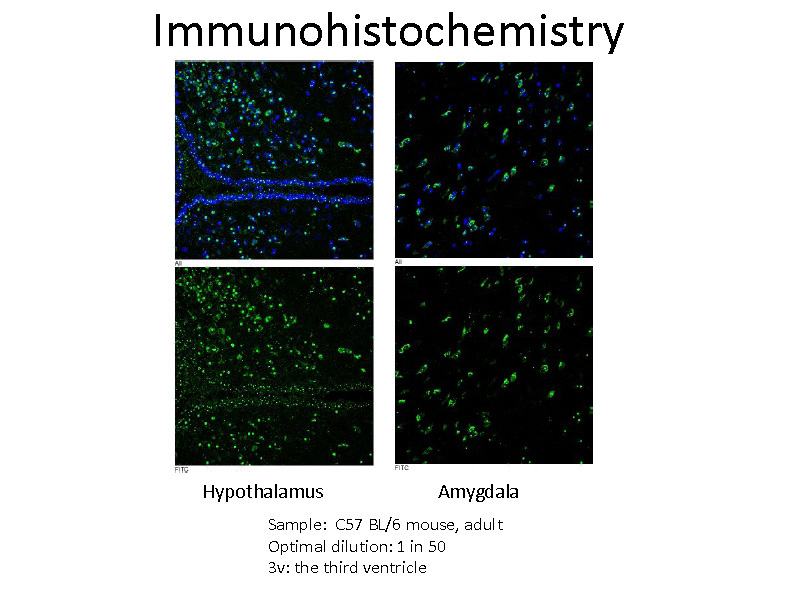
IF result of anti-GPR50 (Catalog No:111130, 1:50) with mouse brain tissue slide by Dr. Qian Li, University of Edinburgh.
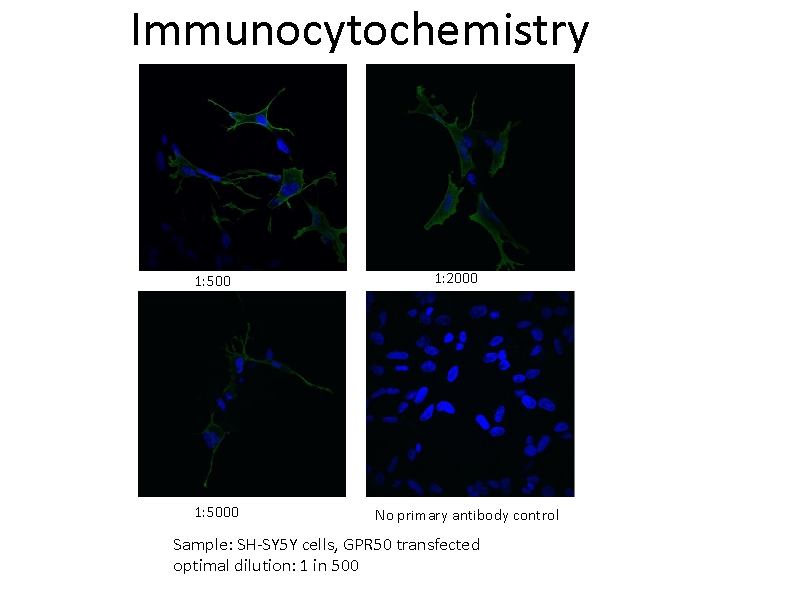
IF result of anti-GPR50 (Catalog No:111130, 1:500) with SH-SY5Y cells transfected with GPR50 by Dr. Qian Li, University of Edinburgh.
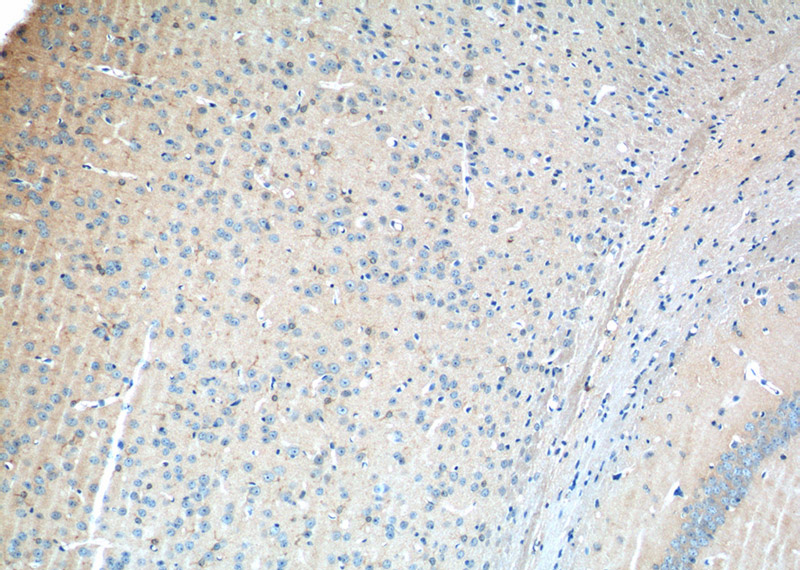
Immunohistochemistry of paraffin-embedded mouse brain tissue slide using Catalog No:111130(GPR50 Antibody) at dilution of 1:50 (under 10x lens)
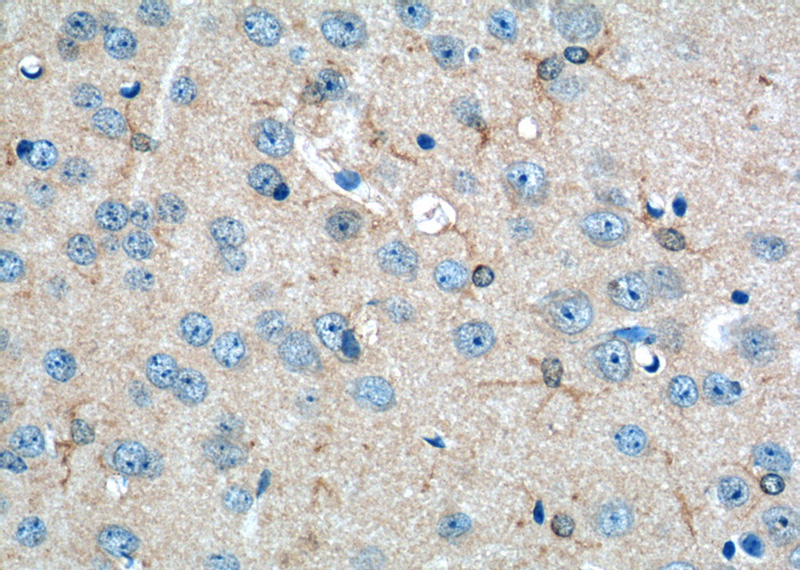
Immunohistochemistry of paraffin-embedded mouse brain tissue slide using Catalog No:111130(GPR50 Antibody) at dilution of 1:50 (under 40x lens)
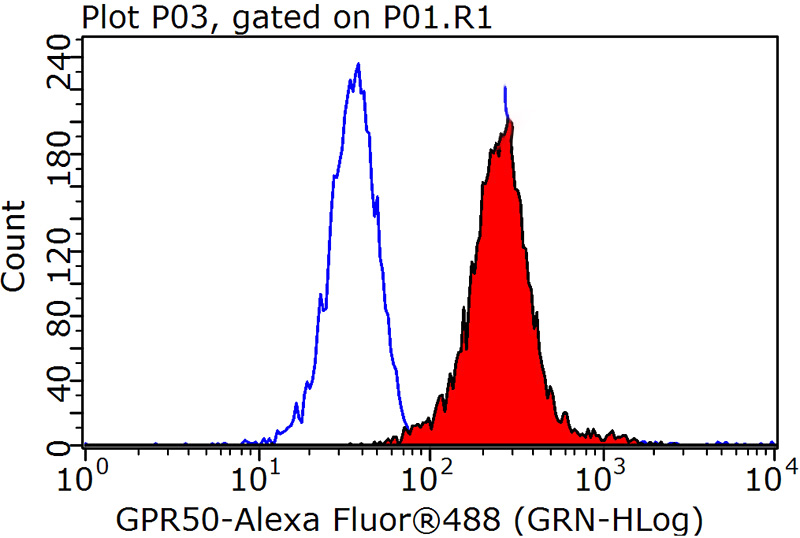
1X10^6 K-562 cells were stained with 0.2ug GPR50 antibody (Catalog No:111130, red) and control antibody (blue). Fixed with 90% MeOH blocked with 3% BSA (30 min). Alexa Fluor 488-congugated AffiniPure Goat Anti-Rabbit IgG(H+L) with dilution 1:1000.
-
Background
GPR50, also known as Melatonin-related receptor or H9, is a member of the G-protein coupled receptor 1 family. It is closely related to the G protein-coupled melatonin receptor family and has been demonstrated as the mammalian ortholog of Mel1c receptor (PMID: 8647286; 18400093). GPR50 does not bind melatonin. It is able to heterodimerize with both the MT1 (Mel1a) and MT2 (Mel1b) melatonin receptor subtypes. While GPR50 has no effect on MT2 function, GPR50 prevented MT1 from both binding melatonin and coupling to G proteins. GPR50 is involved in neuroendocrine function and plays a role in the regulation of energy metabolism (PMID: 8647286; 17957037).
Related Products / Services
Please note: All products are "FOR RESEARCH USE ONLY AND ARE NOT INTENDED FOR DIAGNOSTIC OR THERAPEUTIC USE"
